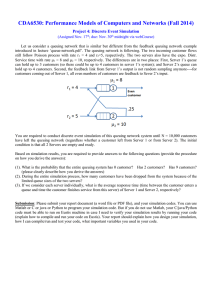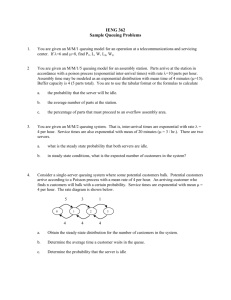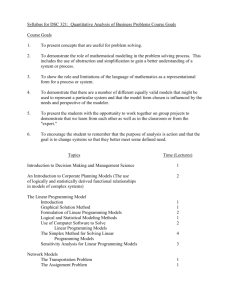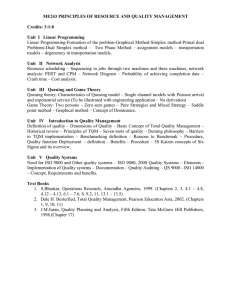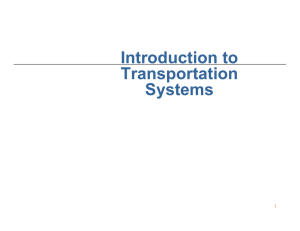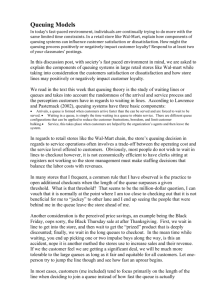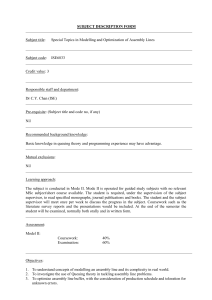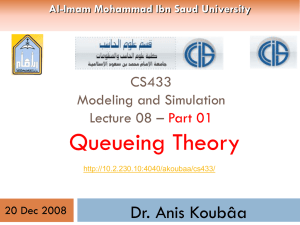Queuing Theory For Dummies Jean-Yves Le Boudec 1
advertisement
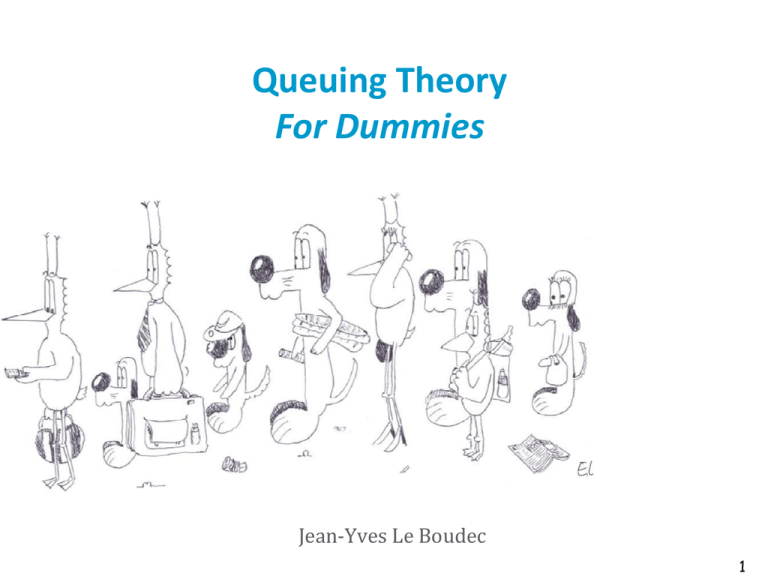
Queuing Theory For Dummies Jean-Yves Le Boudec 1 All You Need to Know About Queuing Theory Queuing is essential to understand the behaviour of complex computer and communication systems In depth analysis of queuing systems is hard Fortunately, the most important results are easy We will study this topic in two modules 1. simple concepts (this module) 2. queuing networks (later) 2 1. Deterministic Queuing Easy but powerful Applies to deterministic and transient analysis Example: playback buffer sizing 3 Use of Cumulative Functions 4 Solution of Playback Delay Pb bits A(t) d(t) A’(t) D(t) time d(0) - D d(0) d(0) + D A. 5 2. Operational Laws Intuition: Say every customer pays one Fr per minute present Payoff per customer = R Rate at which we receive money = N In average λ customers per minute, N = λ R 6 Little Again Consider a simulation where you measure R and N. You use two counters responseTimeCtr and queueLengthCtr. At end of simulation, estimate R = responseTimeCtr / NbCust N = queueLengthCtr / T where NbCust = number of customers served and T=simulation duration Both responseTimeCtr=0 and queueLengthCtr=0 initially Q: When an arrival or departure event occurs, how are both counters updated ? A: queueLengthCtr += (tnew - told) . q(told) where q(told) is the number of customers in queue just before the event. responseTimeCtr += (tnew - told) . q(told) thus responseTimeCtr == queueLengthCtr and thus N = R . NbCust/T ; now NbCust/T is our estimator of 7 Other Operational Laws 8 The Interactive User Model 9 Network Laws 10 Bottleneck Analysis Apply the following two bounds Example 1. 2. (1) (2) 17 11 Throughput Bounds 12 Bottlenecks A 13 DASSA Intuition: within one busy period: to every departure we can associate one arrival with same number of customers left behind 14 3. Single Server Queue 15 i.e. which are event averages (vs time averages ?) 16 17 18 19 Non Linearity of Response Time Mean Response Time in seconds 2.5 2 1.5 1 0.5 Requests 2 4 6 8 per Second 10 20 Impact of Variability Mean Response Time 14 12 10 8 6 4 2 Utilization 0.2 0.4 0.6 0.8 21 Optimal Sharing Compare the two in terms of Response time Capacity 22 The Processor Sharing Queue Models: processors, network links Insensitivity: whatever the service requirements: Egalitarian 23 PS versus FIFO PS FIFO 24 4. A Case Study Impact of capacity increase ? Optimal Capacity ? 25 Methodology 26 4.1. Deterministic Analysis 27 Deterministic Analysis 28 4.2 Single Queue Analysis Assume no feedback loop: 29 4.3 Operational Analysis A refined model, with circulating users Apply Bottleneck Analysis ( = Operational Analysis ) waiting time Z/(N-1) -Z 1/c 30 31 32 Conclusions Queuing is essential in communication and information systems M/M/1, M/GI/1, M/G/1/PS and variants have closed forms Bottleneck analysis and worst case analysis are usually very simple and often give good insights … it remains to see queuing networks 33
